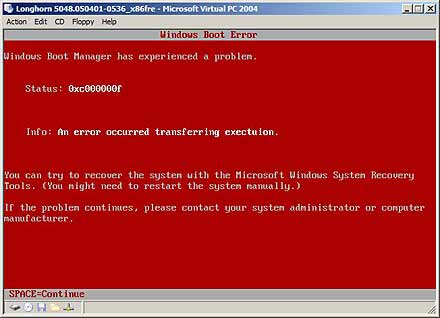Such a helpful page from Redmond giving “Six Tips for Buying an MP3 Player with Flash Memory”. In the interests of objectivity, the Apple Turns Blog has provided an even more helpful crib, to which I am happy to add. Let’s take the six ‘tips’ in turn, shall we?
1. Understand the basics.
For the active person, a player that uses flash memory to store music has distinct advantages over a player that uses a hard disk. Simply put, flash memory players have no moving parts, meaning that you can take them jogging and your music won’t skip.
Translation: Don’t buy an iPod, which has a nasty hard drive for storing thousands of songs, compared with the measly hundreds you can fit on a flash player.
2. Make sure you’re getting all the goodies.
Many portable music players can do more than just play music. Some players have a built-in voice recorder, FM recorder, or stopwatch. And some come with extra accessories like high-quality headphones, a belt clip, or an armband. Because most of these features are included at no additional cost, make sure the device you choose is filled with these fun extras.
Translation: you just won’t be happy unless your player can record FM radio and includes, for some reason, a stopwatch. And it just so happens that iPods don’t do any of these things.
3. You’ll want a display.
When you have hundreds of songs on your player, you really need an easy way to select your music by artist, album, or genre. This is critical if you want to find that one song or artist you really want to hear. A display also comes in handy when you’re looking for your favorite radio station.
Translation: don’t buy a nasty iPod shuffle, even if it doesn’t have a hard drive (see 1 above) because it doesn’t have a display.
4. Let a professional make your next playlist.
Having an FM radio lets you put your player on autopilot as you mountain bike, cycle, or rollerblade. And when you’re sweating it out on the stationary bike at your health club, you can listen to the program airing on the club’s TV. You want to have something that is fun, lightweight, and flexible. And FM radio is a key feature that many players offer at no extra cost, even for less than $100.
Translation: why listen to your own music when you can listen to nonstop commercials and obnoxious local DJs on FM radio? And record them digitally, so you can share that great beer jingle with your friends and loved ones?
5. Pick the right size for you.
The price of a player will depend on its storage capacity—the more megabytes (MB) of storage it has, the more music it can hold and the more it will cost. If you’re ripping your own CDs, using a player with Windows Media Audio (WMA) support as well as MP3 support gives you the most music per megabyte.
Translation: Windows Media is great, and we just wanted to harp on that for a minute. Have we mentioned that Windows Media is great? And it’s much better than that nasty compression stuff used by Apple.
6. Don’t get locked into one online store.
Have you ever been on the hunt for a particular song? Some obscure indie rock tune or rare jazz performance you heard on the radio? You might have to shop at more than one store before you find the song you’re looking for. Having the flexibility to choose from over 1 million tracks of music from multiple online music stores such as MSN Music, Napster, MusicMatch, and Wal-Mart can be the key to getting the music you want. Several stores even offer subscription services so you can download all the songs you want for about the cost of a CD each month. If you buy a device that has the PlaysForSure logo, you’ll know that you can use it with your choice of PlaysForSure music stores.
Translation: it is, however, just fine to get locked into one proprietary data format and DRM scheme– as long as it’s ours. And be sure to avoid that nasty iTunes store.
Summary:
1. Don’t buy an iPod, iPod mini, or iPod photo.
2. Don’t buy an iPod shuffle.
3. Don’t buy an iPod shuffle.
4. Don’t buy an iPod shuffle.
5. Pick the right size for you (as long as you don’t buy an iPod shuffle).
6. Don’t buy an iPod of any kind whatsoever. And don’t buy songs from Apple.


